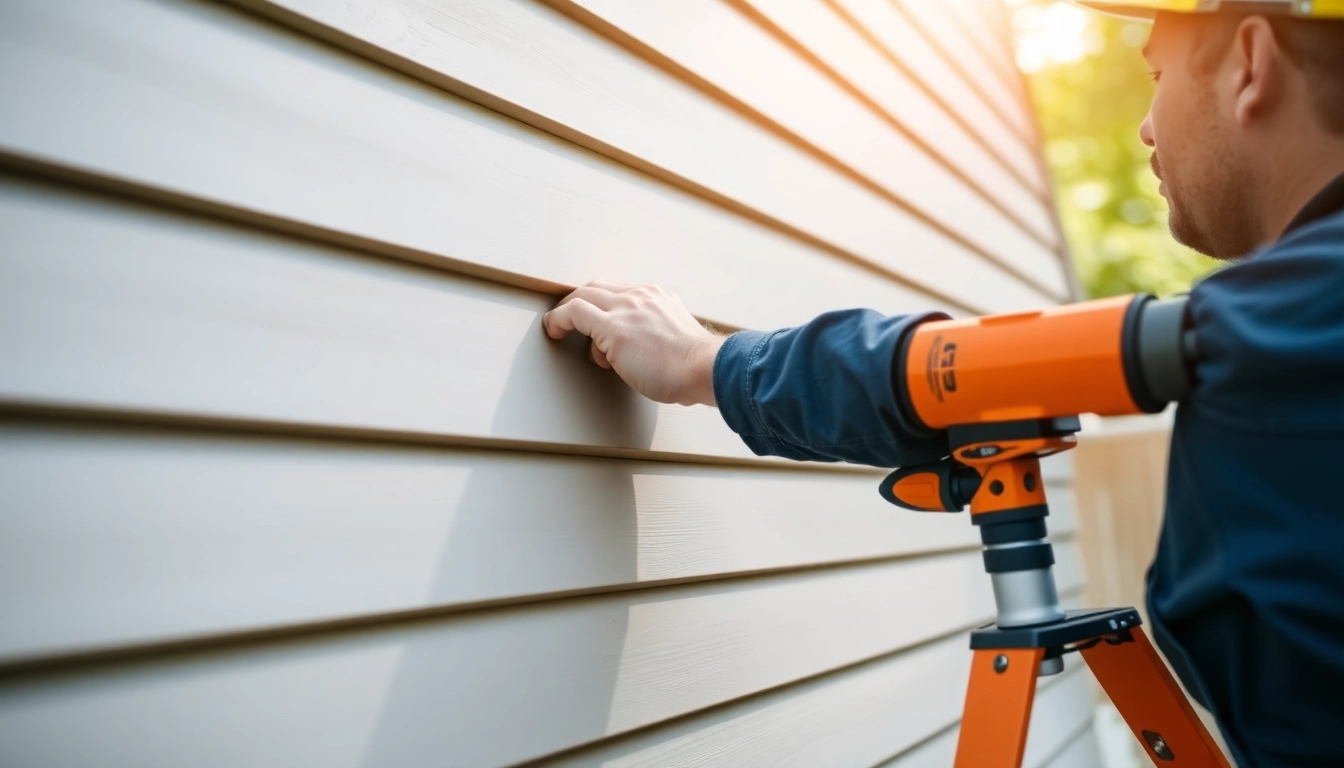Understanding the Role of a Siding Contractor
When it comes to enhancing a home’s exterior appeal, improving its durability, and increasing its market value, hiring a reliable siding contractor is essential. A siding contractor specializes in the installation, replacement, and repair of siding materials that protect your home from weather elements and provide aesthetic appeal. Their expertise ensures that your home’s exterior not only looks attractive but also functions effectively in terms of insulation, moisture resistance, and longevity.
What Does a Siding Contractor Do?
A siding contractor handles various aspects of siding projects, including assessing the existing structure, selecting appropriate materials, preparing the work area, and executing precise installation techniques. They are responsible for ensuring that each siding panel is correctly fitted, sealed, and finished to prevent water infiltration, wind damage, and pest intrusion. The contractor also coordinates with other trades, manages project timelines, and ensures adherence to safety standards.
Types of Siding Materials Offered
Numerous siding materials are available, and a professional contractor can recommend the most suitable options based on your home’s architecture, climate, budget, and aesthetic preferences. The most common siding types include:
- Vinyl Siding: Popular for its affordability, durability, and low maintenance requirements. Available in various colors and styles, vinyl siding offers excellent resistance to moisture and pests.
- Fiber Cement (James Hardie): Known for its robustness and aesthetic versatility, fiber cement siding mimics wood, stucco, or masonry, providing long-lasting protection against extreme weather.
- Cedar / Wood Siding: Provides a natural and classic look. While offering aesthetic appeal, wood siding requires regular maintenance to prevent rot and insect damage.
- Metal Siding: Typically made of steel or aluminum, metal siding offers high durability and is fire-resistant, suitable for industrial or modern architectural styles.
- Cedar Shake or Shingles: Adds a rustic, textured appearance. Used primarily for aesthetic impact rather than protection.
How to Choose the Right Siding Contractor for Your Project
Selecting a competent siding contractor requires careful evaluation of their experience, reputation, licensing, warranty offerings, and project portfolio. Here are critical factors to consider:
- Experience and Specialization: Opt for contractors with extensive experience in siding installations and specific expertise with your preferred material type.
- Licenses and Insurance: Verify that the contractor holds valid licenses and insurance coverage to protect against liability and ensure compliance with local regulations.
- Portfolios and References: Review previous work — whether through online galleries or client references — to assess quality and consistency.
- Written Quotes and Detailed Contracts: Obtain estimates that clearly outline scope, materials, timelines, and warranties. Avoid vague agreements to prevent misunderstandings.
- Customer Reviews and Ratings: Consult independent reviews on platforms like Angi, Yelp, or Houzz to gauge customer satisfaction and reliability.
Key Benefits of Hiring a Professional Siding Contractor
Quality Installation and Long-Term Durability
Professional contractors ensure meticulous installation adhering to manufacturer specifications and best practices. Correctly installed siding prevents issues such as warping, cracking, and water infiltration, significantly extending the lifespan of both the siding material and your home’s structure.
Cost-Effective Solutions and Warranties
Although hiring an expert might seem costly initially, it results in savings in the long run. Proper installation minimizes repair costs, prevents premature siding failure, and often includes warranties that cover workmanship and materials, offering peace of mind and financial protection.
Enhancing Curb Appeal and Property Value
The exterior of your home is the first impression for visitors and potential buyers. Skilled siding contractors can help select materials and designs that boost curb appeal, which translates into increased property value and attractiveness in a competitive real estate market.
Steps to Planning Your Siding Replacement Project
Assessing Your Home’s Siding Needs
Begin by evaluating current siding conditions—look for signs of damage, rot, mold, or insect infestation. Determine whether repairs suffice or if a full replacement is necessary. Consider the existing style, material, and color to decide if you want an update or to preserve the original aesthetic.
Requesting Quotes and Comparing Options
Contact multiple reputable contractors for detailed estimates. Ensure each quote includes comprehensive details about materials, labor, timeline, warranties, and post-installation cleanup. Comparing quotes helps identify best value and avoid overpaying.
Scheduling and Project Timeline Expectations
Once a contractor is selected, establish a clear schedule. Siding replacement typically takes from a few days to several weeks depending on home size and complexity. Plan for seasonal weather conditions and potential delays. Effective communication ensures minimal inconvenience during the project.
Best Practices for a Successful Siding Installation
Preparation and Site Readiness
Prior to installation, homeowners should clear the work area, protect landscaping, and address any underlying home structural issues. Proper preparation facilitates smooth workflow and reduces risks of damage.
Proper Material Handling and Installation Techniques
Contractors must follow specified installation procedures, including correct spacing, sealing, and fastening, to optimize siding performance. Proper ventilation behind siding and adherence to moisture barriers are critical for preventing mold and drafts.
Post-Installation Inspection and Maintenance Tips
After completion, conduct a thorough inspection for defects or installation errors. Regular maintenance such as cleaning, painting (if applicable), and inspecting for damage prolongs siding lifespan and preserves appearance.
Cost Factors and Budgeting for Siding Projects
Average Pricing and Cost Range
Typical siding replacement costs vary based on material, home size, and geographic location. For example, vinyl siding averages between $2.50 to $10.75 per square foot, with total costs for a 2,000-square-foot home ranging from approximately $10,000 to $21,500. Premium options like fiber cement or James Hardie may reach $40,000 or more for larger homes.
Factors Influencing Project Costs
- Material Type: Premium materials incur higher costs but offer increased durability and aesthetics.
- Home Size and Complexity: Larger or intricately designed homes require more labor and materials.
- Existing Siding Condition: Repair needs or hidden damages can increase expenses.
- Labor Rates and Location: Urban areas and regions with higher living costs tend to have higher labor rates.
- Additional Work: Window trims, soffits, and fascia upgrades add to costs.
Maximizing Your Investment and Value
To get the most value, select high-quality materials compatible with your climate, focus on energy efficiency, and choose experienced contractors for precise, long-lasting installation. A well-executed siding project enhances your home’s exterior appeal, reduces maintenance costs, and improves energy performance.









